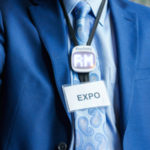The old adage “You can sleep when you’re dead” could easily be customized for meetings: “You can sleep when the meeting is over.” Such is the go-go pace of today’s meetings and conventions, where both organizers and attendees start early, go late, and barely pause in between. Add a few long days of sitting, no exercise, alcohol, heavy meals, late nights, and an unfamiliar bed, throw in some jet leg or a time-zone change, and you have the perfect recipe for poor sleep.
People tell us in surveys they’re exhausted, they can’t remember what they saw, they didn’t have enough time to breathe.
For attendees, the exhaustion that accompanies a meeting or trade show is a known, and mostly accepted, evil. The meeting may be their one big professional event of the year, so they plan for jam-packed days and nights. And because attendees are under increasing pressure to demonstrate the ROI of professional-development events, skipping morning sessions or evening programs is not an option. They simply accept that they’ll leave the conference completely spent. “People tell us in surveys they’re exhausted, they can’t remember what they saw, they didn’t have enough time to breathe,” said Marie-Louise Doyle, director of event solutions for Pragmatic Events in Ottawa.
It doesn’t help that the industry’s culture has a strain of boastful masochism, with meeting professionals taking pride in the grueling hours they themselves put in on site, from pre-dawn room checks to late-night breakdowns. We get less sleep than everyone else, the thinking goes, so what are our attendees complaining about? But someone has to break the cycle — especially in light of the increasing awareness of just how important sleep is to health.
“Sleep really affects performance, and you want to maximize your performance at a meeting,” said Terry Cralle, a Fairfax, Virginia–based Certified Clinical Sleep Educator and spokesperson for the Better Sleep Council, a mattress-industry trade organization. “We have to be incredibly productive, but it’s also about networking and being on your game. You need to remember someone’s name you just met and remember to ask for that business card. But you’re not going to be able to do any of that if you don’t have a good night’s sleep.”
WHY SLEEP MATTERS
The American Academy of Sleep Medicine (AASM) recommends most adults get at least seven hours of sleep a night. The health benefits of sleep are well known, and lack of sleep is associated with a variety of medical issues, including obesity, diabetes, and cardiovascular disease. But it’s not all physical: Sleep also plays an important part in learning and memory — abilities that should be optimized for someone participating in a meeting.
In your younger days, you might have thought pulling an all-nighter was a good way to cram for a test, but research shows that depriving your brain of sleep actually makes it harder to retain information. As people sleep, the brain forms new pathways to help them learn, process, and remember information. Shorting your sleep by even one night can lead to decreased cognitive function and trouble concentrating, according to Harvard Medical School’s Division of Sleep Medicine. In fact, going sleepless for 17 hours causes the same level of cognitive and motor impairment as being legally drunk. “It doesn’t have to be over a long period of time,” said Stuart Quan, M.D., a professor of sleep medicine at Harvard Medical School. “In the short term, sleep deprivation affects your mood and ability to learn and acquire knowledge. If you don’t get any sleep and then sit in a session, you likely won’t remember any of it.”
Even when the amount of sleep lost is relatively minor, it can affect people’s cognitive abilities.
Even when the amount of sleep lost is relatively minor, it can affect people’s cognitive abilities, according to Christopher Barnes, Ph.D., an assistant professor of management at the University of Washington’s Foster School of Business, who focuses on sleep and productivity in the workplace and recently studied the impact of “Sleepy Monday” — the day after daylight saving time goes into effect — on workplace safety. “Typically, on Sleepy Monday we see a loss of about 40 minutes of sleep. That loss is associated with a spike of 5.6 percent in work injuries,” Barnes said. “It highlights that even small sleep loss can have a noticeable impact on performance.”
HELLO, MY NAME IS SLEEPY
It’s not like there hasn’t been a growing awareness of wellness practices among meeting professionals. Planners have begun focusing on healthy food options to boost attendees’ energy and concentration, while many hotels now market sleep amenities such as quiet floors, pillow menus, and circadian lighting.
But physical comfort and fitness is only one part of the attendee experience. To create an event that is truly sleep-friendly, planners need to take a close look at the schedules and programming they create, sleep evangelists like Cralle told Convene. “I know we need to pack as much into these meetings as possible, but we can do better,” she said. “By focusing on sleep, you’re going to find attendees will feel better and be more satisfied with the meeting. Even if they can’t put a finger on it, they’ll have higher satisfaction and will be more likely to come back.”

“When attendees aren’t well rested, they might not be as productive or creative as they could be, and they might miss out on things,” said Antonia Koedijk, who as the New York–based director of business development for the Netherlands Board of Tourism and Conventions is particularly attuned to the jet lag that can plague attendees who travel from overseas — a problem that is only going to get worse as meeting organizers increase their focus on reaching a global audience. “[International attendees] are very committed because they have paid a lot to be there,” Koedijk said. “They won’t see a return on investment if they skip events, so they are very committed.” But that leaves little time for rest. “The grave risk is then they don’t get the experience you want them to have, and they might doubt whether they should come back to the conference or not.”
Indeed, beyond helping attendees remember (or not) what happened in an education session, sleep can also affect their ability to network and make connections. “When you sleep-deprive people for just one night, their ability to engage in creative thinking and innovation is noticeably worse the next day,” Barnes said. “When you go to a conference, you’re hoping to establish new connections and share ideas. We know that the prefrontal cortex is especially hard hit by lack of sleep, and the prefrontal cortex is where a lot of that innovative thinking takes place.
“When people are sleep-deprived, they tend to be irritable, grumpy, easily frustrated, and generally less pleasant to interact with,” Barnes continued. “If we want people to bump into each other and establish a connection, that’s going to be a lot harder if people are walking around grumpy. In fact, they’re more likely to be jerks to each other.”
Despite the fact that many attendees are stumbling around sleepy and off their game, they don’t usually realize it. That’s because people tend to underestimate the impact sleeplessness has on them. “Studies have shown that when you chronically sleep-deprive a person, after a while they don’t realize they’re sleep-deprived,” Quan said. “They think they’re okay, but they’re not really okay.”
Cralle agrees. “Sleep deprivation impairs your insight into how impaired you are,” she said. “If you had something to drink, you might stumble and notice that you’re impaired. Sleep-deprived people don’t have those same cues. They can think they’re fine, but they’re really not. You might be in a meeting and think you’re fine, but are you absorbing the information and retaining it? No.”
HOW TO MAKE YOUR MEETINGS SLEEP-FRIENDLY

Even if your attendees are aware of needing more sleep, they may be reluctant to voice their desire for it. “Needing sleep and being vocal about needing sleep is a taboo in our country,” Cralle said “We’ve got this bravado, but it’s crazy. Only very few people are short sleepers. The rest of us need eight hours to function at our best.”
Rather than waiting for your attendees to ask for greater sleep-awareness, you should proactively embrace it. “The payback of attending to sleep needs,” Cralle said, “is going to be enormous.”
Tip #1: More is not always better
The first step in making a sleep-friendly meeting is to take a close look at the traditional chock-full program, according to Antonia Koedijk, New York-based director of business development for the Netherlands Board of Tourism and Conventions. “I understand the philosophy of jam-packing,” she said, “but I think we need to focus on quality versus quantity.” Marie-Louise Doyle, director of event solutions for Pragmatic Events in Ottawa, suggests practicing some role reversal. “Put yourself in the attendees’ shoes and think about when you go to a conference,” she said. “Are you scrambling for time? Are you stressing out because you were out late, up early, and haven’t called home or answered your work emails? Or are you sitting in a session and actually answering emails? You have to give delegates the opportunity to get 100 percent out of the sessions they’re attending.”
You won’t need to do a lot of research to find out if your attendees are feeling stretched thin. “Look around and see how many people are nodding off in your afternoon sessions,” Terry Cralle, a Fairfax, Virginia-based Certified Clinical Sleep Educator, said. “When we fall asleep, it’s unmasking the sleepiness in all of us. In a boring meeting, we should be bored, not asleep. If people are falling asleep, they’re not getting the sleep they need, and they’re not getting the most that they can out of the meeting.”
One way to make the day a little shorter (and less draining) is to replace some educational sessions with learning centers in the exhibit hall. “Instead of having 40 concurrent sessions over two-and-a-half days, have 30, but arrange for learning or techno pods on the show floor,” Doyle said. “People can sit down and listen, or if they’re not learning anything, they can float to another pod. Maybe the proposals or abstracts that were good but not great don’t deserve a full session, and you can put 10 of them in these learning pods.”
Tip #2: Skip the early-bird sessions
Although early starts (whether it’s a plenary session or a breakfast keynote) have become the norm at most meetings, it might be time to put them to bed. Quan doesn’t attend any early-morning sessions on principle. “I refuse to attend or give a sunrise session,” he said. “I just don’t do it. I think it’s ridiculous.”
Instead of having a 7:30 a.m. networking breakfast, Doyle suggests, start at nine and let people have some leisure time in the morning. Attendees will appreciate being able to sleep in, work out, or grab coffee with their fellow attendees. “People don’t have to be stuck in their hotel rooms,” Doyle said. “You can provide networking opportunities by putting in yoga classes or organized early-morning runs. The pace is more reasonable, and attendees will appreciate it.”
In fact, Doyle has started reducing early-morning sessions at the meetings she works on, and hasn’t heard a single complaint. “We’re not seeing any negative feedback,” she said. “What we’re hearing is ‘A bunch of us met for breakfast’ and ‘It’s nice to have some downtime.’”
The International Sleep Products Association (ISPA), the Alexandria, Virginia–based trade association for mattress manufacturers and bedding-machinery and -service suppliers, made a similar move recently at its semi-annual ISPA Expo. After studying attendee surveys and attendance at morning sessions, ISPA decided to get rid of its earliest sessions.
“We used to offer a 7:30 a.m. educational program before the floor opened at nine, but we haven’t done it the last couple years,” said Catherine Lyons, ISPA’s senior vice president. “We were worried about pushback, but we got no complaints.”
Tip #3: Mix it up
Are you a lark (morning person) or an owl (late to bed)? Not everybody has the same sleep patterns, but with some imaginative scheduling, there are ways to accommodate all your attendees’ sleep habits. “Instead of the most important keynote speaker being at 8 a.m., maybe that’s a time for optional workshops,” Cralle said. “Most adults are at their peak around 10:30 a.m., so structure your most important sessions for then, and make the very-early and very-late sessions optional. Structure your program so nobody misses an important session just because of sleep issues.”
That’s how the National Automobile Dealers Association (NADA) does it at its Convention & Expo. “Our show is for 22,000 people. We have early risers and people who like to go out late, and we try to appease everybody,” said Melissa Wolpert, CMP, NADA’s director of convention services and operations. “That’s why our expo floor is open so long throughout the day. Our general sessions are usually in the afternoon so no one will miss it. We give options and have repeating sessions.”
You can also vary the schedule from day to day, Koedijk notes, so larks and owls each have a fair shot at making key events. “Maybe on Monday you start with a keynote, then switch it around on Tuesday and end with it,” she said. “Try to mix up the timing of networking opportunities, so the morning people don’t only see the other morning people and the night owls don’t only see the other night owls.”
Tip #4: Make time for naps
Cralle is an admitted nap lover, and she’s got science on her side. Research by NASA shows that a nap of just 26 minutes can boost performance by as much as 34 percent. “I would love to see time built in after lunch for people to grab a 20- or 30-minute nap,” Cralle said. “Of all the times and instances where napping would be incredibly helpful, it’s at these meetings. This is the environment where we need it most.”
Naps are gaining credibility in the business world. High-profile employers like Google and The Huffington Post promote workday napping, with dedicated napping rooms. Indeed, Huffington Post co-founder and editor-in-chief Arianna Huffington is a self-proclaimed “sleep evangelist” who conducted parts of her Thrive conference in New York City last year from a plush bed. At SXSW 2015, HBO promoted its “Silicon Valley” show with nap pods in its HBO Lounge. And at NADA 2015, attendees could take a break from the exhibit hall in one of four nap pods.
The pods were part of a NADA-sponsored “Lifestyle Experience” retreat on the show floor. “People loved them,” said Christine Marshall, NADA’s manager of convention operations. “They were in constant use.” It was Marshall’s idea to add the nap pods this year, and she said she’ll likely provide them at NADA 2016 as well. “Sometimes when you’re on the floor and there’s so much extraneous sound, and noise and lights, and so many places for your eye to look,” Marshall said, “you need a little place to just relax for a few minutes.”
Tip #5: Lead the charge
One way you can help attendees get more and better sleep is to bring the topic out into the open. Cralle suggests putting sleep tips in registration materials or holding a wellness session on the importance of sleep and performance. “Attendees will appreciate that you’re thinking about their health and their sleep,” she said, “even if they aren’t yet comfortable asking for more sleep during a meeting.
“A truck driver can raise his hand and say, ‘Too much,’” when sleeplessness starts interfering with job performance, Cralle said. “We’re not there yet in other industries, but we can anticipate and expect that [people are sleep-deprived and would perform better with more sleep], and if at all possible, construct our meetings around it. The things we can do to accommodate better quality sleep, let’s do it.”
Test Time
The Certified Meeting Professional (CMP) is a registered trademark of the Convention Industry Council.





